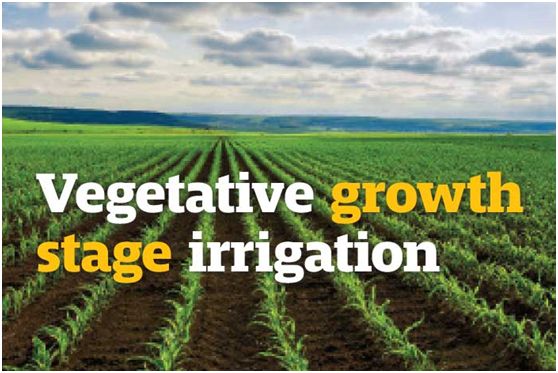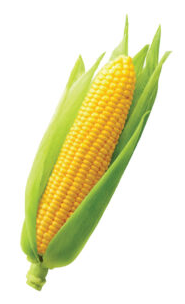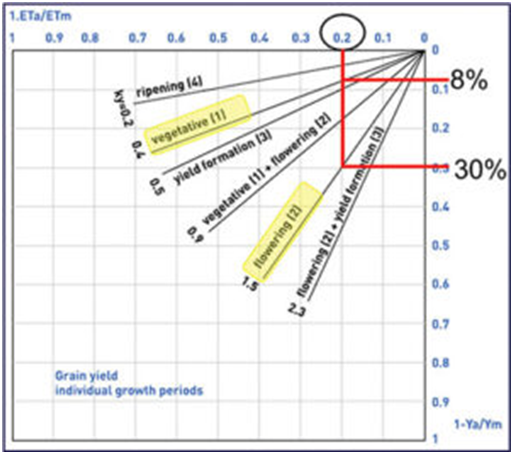
Vegetative growth stage irrigation

Learn how to schedule around this important time frame for your crops.
Irrigation scheduling is always a challenge, and this year will not be any different. Some of the most difficult irrigation scheduling decisions relate to vegetative growth stage irrigation scheduling. Early in the year on hot afternoons when the crop starts looking dry with that silvery look and some leaf rolling (keep in mind the water stress level when corn starts to roll its leaves is variety dependent), it makes you feel like starting the irrigation. But do you need to?
Growers often start their center pivots early to incorporate fertilizer/herbicides or soften a soil crust to aid crop emergence. Others with furrow-irrigated fields may make an early application, often before the crop actually needs much water, to consolidate the soil in the furrows. When the need for full irrigation comes, the water will more easily run the full length of the furrows.
Aside from these non-irrigation applications, the question is, “How much irrigation water will the corn need during the vegetative growth stage to produce optimal yields?”
Growth stage irrigation scheduling
Growth stage irrigation scheduling for corn focuses on delaying irrigation and reducing nitrate leaching during the less sensitive vegetative period and fully watering during the critical reproductive stages. This strategy, called “Water Miser,” is based on research conducted by the University of Nebraska and elsewhere that shows corn is relatively drought-tolerant during the vegetative period, but it is very sensitive to water stress during silking through early grain fill. Research conducted in the North Platte area has shown that irrigation could be reduced by 1 to 4 inches compared to a fully irrigated crop during the vegetative period without a significant yield reduction, if any. The research was conducted on deep silt loam soils. Keep in mind that much of the water the corn is using during this growth stage is coming from the roots growing deeper each day into moist soil.

Reducing irrigation costs and lowering pumping are two important reasons to consider allowing moderate moisture stress on vegetative corn. Additional reasons include the possibility of lowering green snap potential and helping set the stage for easier irrigation scheduling. Reports have indicated that corn under moderate moisture stress has suffered less green snap compared to fully irrigated corn right next to it. Research studies have not been conducted to confirm this, but it does make some sense because the corn would be a little shorter and possibly less brittle.
The Water Miser strategy focuses on delaying irrigation until approximately one or two weeks before tassel emergence for corn unless the soil-water drops to 30% of plant-available water in the active root zone. Once the crop reaches the reproductive growth stage, the plant-available soil water (in the active root zone) should be maintained in a range between field capacity and 60% of plant-available water. Usually, the soil is maintained ½ to 1 inch below field capacity to allow for rain storage. After the hard dough stage, the soil is allowed to dry to 40% of plant-available water to reduce pumping and provide drier fields for harvest. The Water Miser strategy is very difficult to manage on lower water holding capacity or shallow soils and thus it is not recommended on these soils.

Figure 1. Relationship between relative yield decrease (1-YieldActual/YieldMax) and relative ET deficit for the individual growth periods. (Source: Food and Agriculture Organization)
Figure 1, produced by the Food and Agriculture Organization of the United Nations, shows the relative relationship between yield decreases and evapotranspiration deficits for individual growth stages of corn. The chart can be understood by knowing that the upper right-hand corner represents a fully watered crop with full yield, thus no reduction of ET or yield. It is indicated by the zeros. The 0.5 on the top represents a 50% decrease in ET because of water stress and the 0.5 on the right represents a 50% reduction in yield. For example, a 20% ET deficit would result in an 8% yield decrease during the vegetative stage, whereas the same ET deficit would result in a 30% yield decrease during the flowering (silking) stage. The 8% yield decrease would be for a 20% reduction in ET from moisture stress for every day from the time the corn emerges up through tassel. This level of moisture stress is very unlikely to happen during the vegetative stage in fields that were irrigated the previous year but could easily happen during the much shorter silking stage. FAO has produced charts that show very similar results for most other crops grown for grain.
Nebraska research suggests that some leaf rolling during the afternoons during the vegetative stage will not reduce yield significantly, if at all. Corn leaf rolling will often start in areas of soil compaction like field driveways or turn rows. These areas are usually small compared to the whole field but are evident from the road. The bigger question is what is going on over the majority of the field. Soil water monitoring is an excellent way to know how much water is in the root zone and gives you added confidence to put on just enough water to produce optimum yields.
In summary, research suggests that little irrigation is needed most years on corn during the vegetative stage to produce top yields in the eastern two-thirds of Nebraska on silt loam soils. Although this research may not have been conducted in your state, it should help you critically think about how much water you need to put on corn during the vegetative stage. Sandy soils or shallow alluvial soils with underlying sands will need more irrigation of course, but keep in mind the research shows moderate moisture stress during the vegetative stage will not usually lower yields much, if any. However, fields with lower capacity irrigation systems, especially in combination with sandy soils, will need to start prior to the reproductive stage to assure corn can be fully watered by tassel time.
By Steven Melvin. (Steven Melvin is an extension educator at the West Central Research and Extension Center for the University of Nebraska-Lincoln.)
Source from: IrrigationToday


